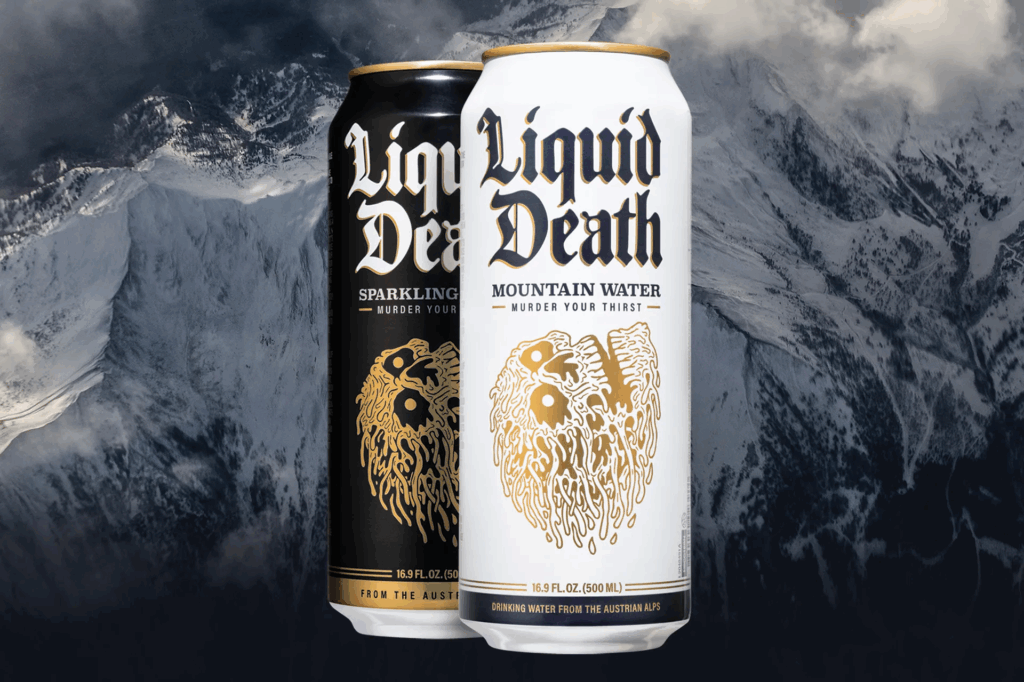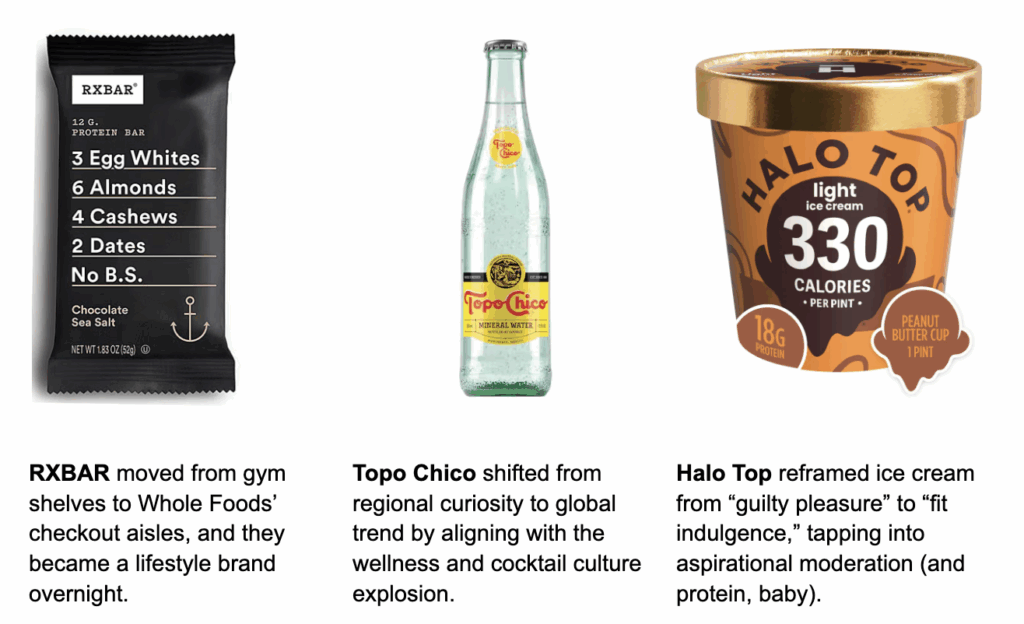There’s a peculiar alchemy at work in marketing. Sometimes, the smallest shift in how or where a product shows up can create a seismic change in how it’s perceived. Like the butterfly effect in physics, where a single flap of wings can set off a hurricane halfway around the world, minor contextual changes can ripple through a brand’s ecosystem, reshaping everything from consumer trust to category dominance.
It is a subtle art to reframe a brand not by reinventing it, but by changing the context in which it lives.
The Fat Tail of Brand Influence
Business types and corporate marketers often think linearly: X message plus Y spend equals Z result. It’s calculated in terms of impressions and sales lift, YoY volume and coupon redemptions. But real-world brand influence doesn’t follow a straight line. In real life, it looks more like “fat-tailed” distribution.
When you’re talking about brand impact, it is more likely that a collection of small events are going to add up to drive outsized results. The proverbial butterfly flapping its wings. Or a lot of butterflies flapping a lot of wings.
A single partnership, a cultural moment, or a well-placed activation can do more than years of incremental advertising or coupon redemption programs. It is more about changing perceptions, changing the meaning of the product itself. Where it stands. How it is perceived.
That’s what gets long-term results.

Liquid Death is a great case study here. If you’ve taken a look at the water category, it is jam packed with contenders. It’s frankly amazing how crowded a category something as simple as water can be. But with the push for hydration as the ultimate health boon (standing right next to protein), everyone wanted to jump into the deep end (pun intended).
The general path went first to purity, then to additives. Water alone was not seen as enough, so you had to have the most pure, sourced from pristine, virgin wells. When that wasn’t enough, we saw flavored waters, carbonated waters, vitamin waters, THC waters, caffeine waters, you name it.
Liquid Death came in and took a different approach. Instead of worrying about what was in the water, they focused on what the water meant. What the can said about the person holding it. They embraced a “punk-rock lifestyle brand” and made their cans bad-ass representations of that.
They made water punk.
The brand didn’t change their product. They didn’t add any flavors or carbonation or alkylines. It’s just water in a can, for goodness sake. But Liquid Death changed what people thought they were participating in when they bought (and held) that can.
This is the intersection between context and community, and it’s a great place to explore when you’re talking about marketing to a high-trust audience like the U.S. military. When you can build a strong affiliation with this audience, your brand inherits some of that trust. You don’t have to change what you’re selling. You change how it’s seen.
So how do you flap the butterfly wings to make this happen? Keep reading.
Reframing the Familiar
The genius of reframing lies in identifying what already exists and then giving it a new lens.
In behavioral economics, this is called choice architecture. How options are presented changes how they’re valued. A product like Splenda described as “zero sugar” signals something different than “naturally sweetened.” The first frames absence (what it’s not); the second frames intention (what it is). The product might be identical, but the story, and therefore the emotion, shifts entirely.
Reframing doesn’t require a new tagline or formula. It often begins with asking:
- What cultural or emotional current could my brand ride?
- What if I positioned my product in a different emotional category?
- What small change could flip the script?
Diet soda became an alternative energy drink when caffeine was reframed as a feature, not a flaw. Or, in the case of Diet Dr Pepper, they went one further and leaned into the different flavor profile. Instead of trying to taste like a low calorie version of Dr Pepper it became its own thing, craved for its own unique flavor.
Protein powder became fuel for a healthy body. Products normally seen as indulgent, like cheese, shift the focus to a healthy, protein-rich snack option.
Alternative sweeteners like Splenda could become a “performance enhancer” for people optimizing their wellness.
These are contextual pivots that open new territories of meaning.
The Military Market: A Case Study in Context
Few audiences understand transformation through context better than the military community.
For these folks, health, performance, and readiness are mission-critical. Choices around food, fitness, and self-improvement carry cultural weight. You’re doing it for the unit, not just for yourself. Service is baked into the equation.
That’s why context matters so profoundly in the military context. A brand that’s “healthy” in the general market might be “mission-fueling” in one of the Exchanges. A snack bar that’s “on-the-go” elsewhere might be “field-ready” at the Commissary.
This reframing doesn’t require fabrication. More to the point, it’s about aligning with the lived experience of the audience you’re engagin with and speaking their language fluently. That’s good marketing in any context, but with the military audience an even more precise calculation you should be making.
Daring to Go with the Gut
Sometimes, these shifts happen because a brand dares to follow instinct over convention.
In a marketplace driven by algorithms and A/B tests, intuition is the last competitive advantage.
Going with the gut isn’t guesswork, not really. It’s more of a form of pattern recognition, a skill developed through empathy and cultural awareness. It’s what told Nike to risk everything with Colin Kaepernick. What told Dove that “real beauty” wasn’t found in the models, but in the mirror. What told Liquid Death that humor and rebellion could sell hydration.
These are not “safe” moves, but they are authentic. And in this game of marketing authenticity is the fuel that beats the butterfly’s wings..
When brands trust their instincts and lean into emotional truth, audiences feel it. That’s when perception shifts from transaction to tribe. That’s where brands are made.
Small Shifts, Big Impact
Consider these micro-contextual changes that led to macro brand transformation:

None of these brands changed what they were selling. They changed what people thought they were buying. Health food to guilt-free snack. Hispanic beverage to cultural experience. Cheat to fuel.
The Power of Association
Brands are social constructs. They gain power from the company they keep.
Aligning with trusted communities, meaningful causes, or aspirational behaviors amplifies credibility and cultural currency.
We invest deeply in understanding the military audience ecosystem. We’ve found this is one of the most interconnected and brand-loyal populations in the U.S. (That’s not just us, btw. Lot’s of research agrees with us on that front)
When a product becomes part of a trusted community’s story, it becomes something greater than itself.
It transforms from a brand to a signal of belonging. Liquid Death. Nike. Starbucks. Apple. More brands than we can name hold this level of status.
From Sweetness to Substance
Ultimately, what we’re talking about is meaning-making.
Sugar isn’t just sweet. Sweetness isn’t just flavor. In the modern marketplace, “sweet” can mean balance, moderation, control, choice, and self-mastery. It can carry a plethora of meatnings.
How we describe that sweetness, and more importantly who and what we associate it with, can redefine entire categories.
Brands that dare to shift perception don’t just chase the market, they seek to reshape it. They change the conversation by changing the frame. The difference between “just another product” and “a cultural movement” is all about establishing a new context.
The Takeaway
Every marketer wants to make a big impact. But the future belongs to those who think fat-tailed, who understand that a small spark in the right place can light up an entire market.
Don’t chase trends. Don’t copy what your competitors do or say. That’s a loser’s game. You have to master the context in which your product is seen. You have to identify where your brand naturally fits into people’s lives and then define that space on your own terms.
True brand transformation begins with changing how the world sees it.
